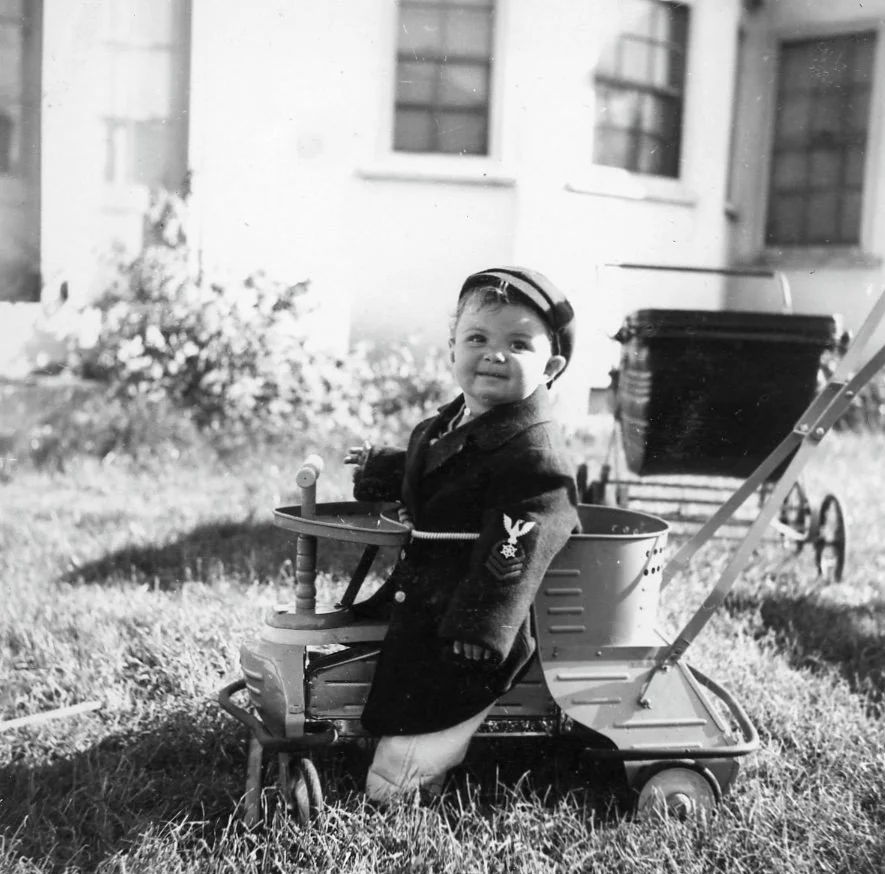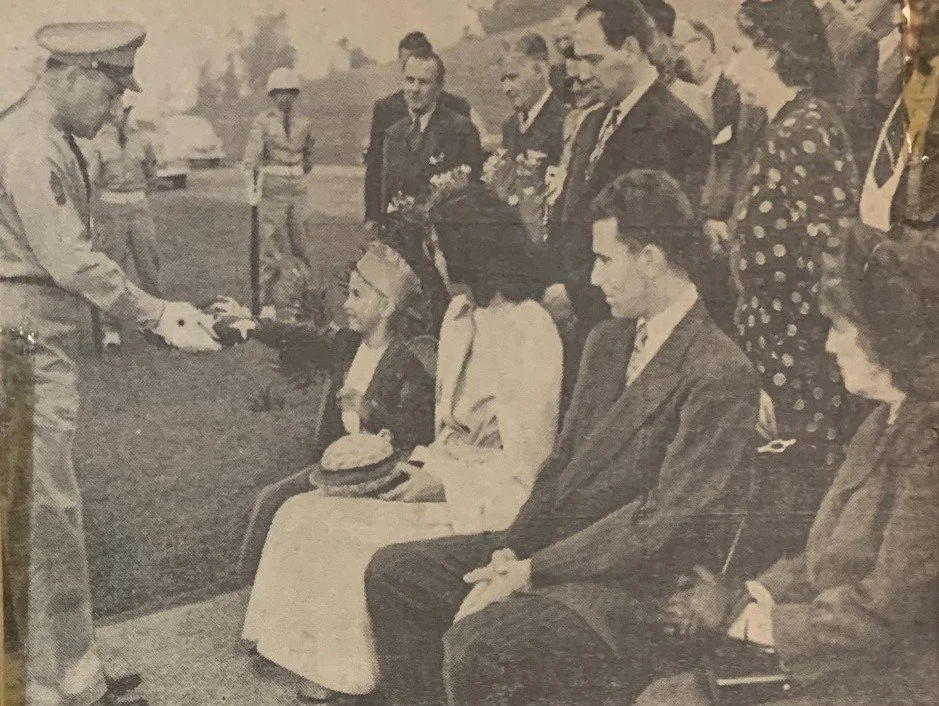The Child in the Army Coat: A Story of Silent Legacy
On memory, material, and the silence between years
At Acanthus Home, we believe heirlooms come in many forms—furniture, photographs, even silence. This is the story of one such legacy.
It is 1945 in Los Angeles. Just a few blocks from what is now UCLA, a little boy sits quietly in a sunlit front yard. He is not yet walking, not yet talking, but already holds history.
Draped in memory before he could walk.
Photographed in 1945, a portrait of presence, long before understanding. From a private collection.
The child wears an Army coat many sizes too large. Its folds engulf his small frame; the insignia resting solemnly on his arm. A cap tilts softly on his head. The coat belonged to his father, a U.S. Army soldier declared Missing in Action on December 6, 1944, during one of the most grueling battles of the Second World War: the Battle of the Hürtgen Forest.
The father’s body would not be found for five more years.
At Acanthus Home, we often say heirlooms are not always inherited—they are encountered. And sometimes, they arrive too soon. In a photograph such as the one of the little boy, presence is everything. There is no grand gesture of mourning. No fanfare. Only a child in a soldier’s coat, seated in his metal stroller, as the world tilts toward an uncertain peace.
The Battle of the Hürtgen Forest
From September 1944 to February 1945, the Hürtgen Forest became one of the longest and most devastating battles fought by the U.S. Army. Set in the shadowy thickets of western Germany, the forest was a labyrinth of rain, ice, and artillery. The terrain itself became a weapon—mined, booby-trapped, and impossible to navigate. Nearly thirty-three thousand American lives were lost or forever altered.
While the Battle of the Bulge gained more public recognition, the Hürtgen Forest haunted those who survived it—and those who never returned. The Ken Burns documentary The War gave the Hürtgen Forest its due. The film told of the near-unlivable conditions, the staggering losses, and the deep psychological toll it left behind. It was in this forest where the boy’s father disappeared.
Now, in 2025—the 80th anniversary of the Hürtgen—we remember not only the soldiers lost, but the quiet echoes they left behind. In photographs. In silence. In the everyday objects that became symbols of absence and endurance.
The stroller—simple, metal, and precise—is a metaphor of wartime architecture: austere, functional, built not for indulgence but for endurance. Its riveted joints and curved handles reflect the material discipline of a country at war, when even objects of childhood were shaped by necessity.
At Acanthus Home, we are drawn to forms like these—not merely for their silhouette, but for the quiet strength they carry. For their role in the rituals of waiting, hoping, holding on.
And the coat—his father’s—was lived in twice: once in service, once in absence.
This is what we mean by the anthropology of objects. The biography of belongings. At Acanthus Home, we don’t just restore furniture—we preserve the feelings, stories, and silences held within.
This photograph, taken near UCLA, is more than an image. The scene captures a quiet act of legacy.
Five years later, another image was captured—this time, at the funeral of the boy’s father. Still too young to understand, he reached for the folded flag as it was placed in his hands. The ritual was solemn, the gesture practiced. But to him, it was still just a moment. Just an object.
A gesture too large for his hands.
Five years after his father vanished in the Hürtgen Forest, the boy—still unaware of the meaning—receives the folded flag at the funeral. A moment of ceremony. A lifetime of unspoken memory.
At Acanthus Home, we’ve reflected on memory before:
The Bench Was Empty: A Love Letter from 1919
The Chair, the Bench, and the Spaces In Between
Inheritance Without Ownership
This story, like the others, reminds us:
Legacy is not always spoken. Sometimes, it is worn. Sat in. Or simply remembered.
Just as a child once wore a coat not yet his own, so too do the objects we live with carry past lives. At Acanthus Home, we honor these continuities—reviving furniture not simply as décor, but as vessels of memory, presence, and meaning.
Where memory is made material. Where presence endures in form.
Discover heirlooms with soul, and the stories they quietly carry.
Explore the Collection & Journal →

